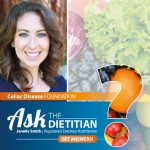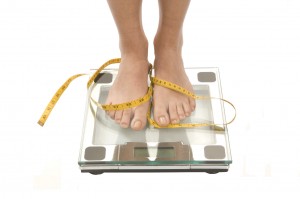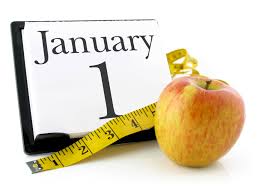 Every New Year begins with the best of intentions. Read on for specialized info for those on the gluten-free diet to take your health to the next level in 2015 (plus tips to help these changes stick!)
Every New Year begins with the best of intentions. Read on for specialized info for those on the gluten-free diet to take your health to the next level in 2015 (plus tips to help these changes stick!)
Maximize Your Health with Naturally Gluten-Free Foods
There’s no need for expensive gluten-free health products that boast claims that seem too good to be true. Take advantage of the positives of the celiac way of life by utilizing naturally gluten-free foods to maximize your health:
Rotate your whole grains: the vitamin and mineral content of each grain varies. If your diet is mostly full of the common rice, corn, and potato-based gluten-free products, your body keeps getting the same nutrients over and over (and is missing out on some amazing super-grains!). Also be sure to choose grain-based products that are LABELED gluten-free to avoid naturally GF foods that are potentially cross-contaminated with wheat, barley or rye (read more about this). A sample day maximizing GF grains might look like this:
- Breakfast: buckwheat (kasha) and oats hot cereal served with nuts, berries, and a dollop of yogurt
- Lunch: mixed greens salad with white beans, cooked quinoa and millet
- Dinner: broiled salmon and sauteed kale served with amaranth and corn flatbread
- Find more easy nutritious recipes HERE!
Institute Meatless Mondays and Fatty Fish Fridays: The American diet often relies too heavily on animal fats and proteins, which means that in the process we are missing out on the heart-healthy benefits of plant proteins and fats. Plant-based proteins (i.e. beans and legumes, including soy) deliver great omega-3 and omega-6 fatty acids, are low in saturated fat, naturally contain NO cholesterol, and may prevent many chronic illnesses. To further boost health, studies show that just two servings of fatty fish per week deliver essential fatty acids that calm inflammation in the body, something that those with celiac disease greatly need.
Get at least one leafy green per day: Dark leafy greens are a beautiful gift from nature. Underneath the green color is actually a plethora of other phytochemicals like those found in orange, red, and purple vegetables. One serving per day of kale, chard, spinach, or mustard greens will give you a boost of vitamins A, C, K, and folate to help combat the oxidative stress of daily life, plus many essential minerals. Maximize vitamin and mineral absorption by lightly cooking greens and serving with a fat source, such as sauteed in olive oil. You can also enjoy them in a salad for great texture or add them to a smoothie without any change in flavor (even your kids won’t notice!).
Vary your cooking oils and salad dressings: Similar to the different nutrient contents in grains, the properties and benefits of different fats have richly diverse benefits for the body. Did you know that every cell in our body is composed of fatty acids? To help improve the health of your skin, intestines, and cardiovascular system, keep several different oils on-hand for both hot and cold dishes. Flaxseed, hemp, pumpkin seed, and walnut oils are too delicate for heat but add wonderful flavors to salads and other cold dishes. Olive, grapeseed and sesame oil are appropriate for quick sauteeing, and coconut, avocado, safflower, and canola oils are stable for longer frying and baking. When varying your sources of fat from the typical vegetable oil and butter, you are certain to receive a wonderful balance of monounsaturated, polyunsaturated, and saturated fats in the best proportions.
Weight Management after Diagnosis
If your New Year’s Resolution includes a weight goal, keep the following information in mind to make a realistic and healthy plan:
 Weight gain is typical after diagnosis of celiac disease, even if you were already considered normal or overweight. The food you were eating was only partially absorbed prior to diagnosis, and it may continue to be for several months on the gluten-free diet until intestinal villi fully heal. In this sense, weight gain is a sign that the body is healing well and you’re succeeding at the gluten-free diet.
Weight gain is typical after diagnosis of celiac disease, even if you were already considered normal or overweight. The food you were eating was only partially absorbed prior to diagnosis, and it may continue to be for several months on the gluten-free diet until intestinal villi fully heal. In this sense, weight gain is a sign that the body is healing well and you’re succeeding at the gluten-free diet.- Portion sizes and overall intake may need to be reduced because of the above; appetite before diagnosis may have been higher than normal since nutritional needs were not being met. This can be an unpleasant adjustment that needs to be made (in addition to the huge life change of eliminating gluten!). Focus on the above health-maximizing tips and do not rely heavily on packaged gluten-free products to simultaneously prevent weight gain and improve your health.
- If you were underweight at diagnosis and weight gain does not begin after a couple months, or it starts but then stalls before returning to normal, consult your gastroenterologist for more workup and a registered dietitian for diet counseling. The most common cause of continued malabsorption is gluten exposure. Other common causes of malabsorption on the GF diet include: small-intestinal bacterial overgrowth (SIBO), chronic diarrhea, and colitis (read more about poorly responsive celiac disease)
- While weight should return to normal as the intestines heal, some may benefit from weight-gain techniques to speed up the healing process if they are grossly underweight at the time of diagnosis. This can be especially true for children whose growth and development has been stunted, or who are averse to eating from chronically negative symptoms after eating.
- Typically, it is not advised to limit a child’s diet calorically until they return to their usual growth curve, even if growth or intake seem to be extreme. Consult a pediatrician and/or a registered dietitian specialized in pediatrics to help ensure that your celiac child’s growth is headed on the right track after diagnosis.
Weight Management in Absence of Celiac Disease
- The gluten-free diet is not a good weight-loss diet, despite what you’re hearing from celebrities.
- Nothing about gluten itself is “fattening” or “high in calories”. No credible research exists that proves gluten or wheat are responsible for overweight or obesity in America.
- Substituting common grain-based foods (bread, pasta, baked goods) with gluten-free processed foods typically leads to weight gain. This is because gluten-free substitutes are frequently higher in sugar, fat, and calories in order to mimic the texture of gluten, and less filling because they are often lower in fiber than their gluten-containing counterparts.
- There is not enough scientific research regarding non-celiac gluten sensitivity (NCGS) to know how a gluten-free diet effects weight in NCGS.
Conquer the “New Years Resolution” Phenomenon
 Make positive goals rather than negative ones. Behavior is most successfully changed when, instead of just eliminating something, an old behavior is substituted with a new one:
Make positive goals rather than negative ones. Behavior is most successfully changed when, instead of just eliminating something, an old behavior is substituted with a new one:
- Ex. “Eat two more servings of vegetables per day” instead of “Don’t eat sugar”
Start small and realistic; drastic changes rarely stick!
- Ex. “Increase fruit intake by one serving every day” vs. “Eat healthier this year”
Get back on the wagon no matter what month of the year the calendar says. Behaviors change with practice and with time; don’t expect yourself to change overnight, and don’t see yourself as a failure if there are ups and downs in the process.
Enlist the help of others; changes stick best when not done alone. For individualized and expert help, find a registered dietitian in the CDF Healthcare Practitioner Directory!
